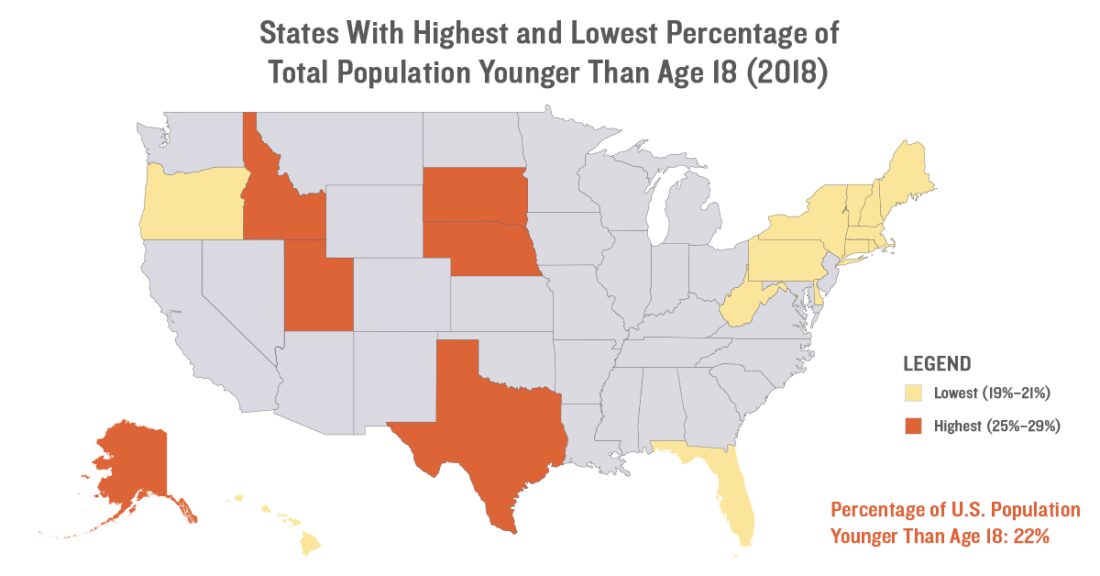The Share of Kids in America Fell Faster Than Expected in 2018

Children represent only 22% of people living in the United States — down from 23% in 2017 and 26% in 1990, which is the earliest year captured in the Annie E. Casey Foundation’s KIDS COUNT Data Center.
Children took up the greatest share of the nation’s population in 1960, when they represented 36% of all Americans. The group’s population count peaked later — in 2009, with 74.1 million kids on record nationwide. Since that time, the total number of kids in America has steadily fallen and now sits at 73.4 million, according to U.S. Census Bureau’s population division.
By contrast, the number of adults living in America has grown each year since 2009.
This trend — sometimes described as the graying of America, with larger numbers of adults reaching retirement age — has long been anticipated by demographers. However, as recently as 2014, the Census Bureau did not expect the share of children to fall to 22% until 2030. Subsequent projections in 2017 estimated that the United States would be 22% kids by 2020 and hover just above 21% by 2035, when it is predicted that people ages 65 and older will outnumber children.
At the local level, child population rates have fallen in all 50 states plus the District of Columbia since 1990. The drops were greatest in Maine, New Hampshire and Vermont, where the share of kids in each state fell from 25% in 1990 to 19% in 2018. New Jersey reported the smallest change, with kids representing 23% of the state’s total population in 1990 and 22% in 2018.





